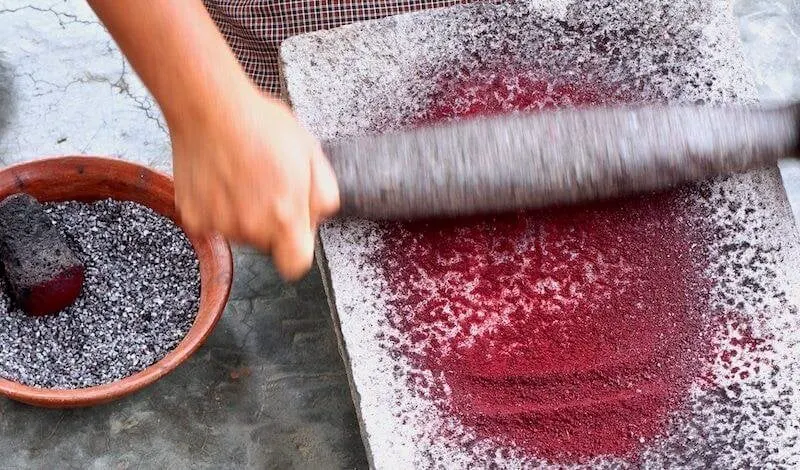Thank bugs for red velvet cake? How Cochineal insects became a sustainable source of food dye
Thank bugs for red velvet cake? How Cochineal insects became a sustainable source of food dye

A surprising amount of the food we consume contains various compounds to add color. Marshmallows look white, but they contain blue coloring (to keep them from growing less bright as they sit on shelves). Starbucks uses food coloring in its strawberry drinks. And frozen meat, like fish and crab meat, contains red food coloring to make it more appealing.
But where do we get this food coloring from? In the case of many red dyes, it comes from an unexpected source:
The crushed bodies of a Central and South American insect, called the Cochineal.
In order to repel other insects, birds, or other creatures that may find it to be a tasty snack, the Cochineal produces a nasty-tasting compound called carminic acid… If you harvest a bunch of these bugs, crush them up, and dunk them in an acidic solution, the carminic acid can be extracted. When extracted and processed through mixing with salts, the result is carmine dye, which is a brilliant, vibrant red color.
(You may also recognize this color under other names, including Cochineal extract, Natural Red 4, E120, or Crimson Lake.)
Thankfully, these bugs grow and reproduce quickly, since it can take 70,000 individual Cochineal insects to produce a pound of Carmine Red dye!
Read the original post
 | Videos | More... |

Video: Nuclear energy will destroy us? Global warming is an existential threat? Chemicals are massacring bees? Donate to the Green Industrial Complex!
 | Bees & Pollinators | More... |

GLP podcast: Science journalism is a mess. Here’s how to fix it

Mosquito massacre: Can we safely tackle malaria with a CRISPR gene drive?

Are we facing an ‘Insect Apocalypse’ caused by ‘intensive, industrial’ farming and agricultural chemicals? The media say yes; Science says ‘no’
 | Infographics | More... |

Infographic: Global regulatory and health research agencies on whether glyphosate causes cancer
 | GMO FAQs | More... |

Why is there controversy over GMO foods but not GMO drugs?

How are GMOs labeled around the world?

How does genetic engineering differ from conventional breeding?
 | GLP Profiles | More... |

Alex Jones: Right-wing conspiracy theorist stokes fear of GMOs, pesticides to sell ‘health supplements’





 California, Washington, Oregon forge immunization alliance to safeguard vaccine access against federal undermining
California, Washington, Oregon forge immunization alliance to safeguard vaccine access against federal undermining Trust issues: What happens when therapists use ChatGPT?
Trust issues: What happens when therapists use ChatGPT? Fighting deforestation with CO2: Biotechnology breakthrough creates sustainable palm oil alternative for cosmetics
Fighting deforestation with CO2: Biotechnology breakthrough creates sustainable palm oil alternative for cosmetics Viewpoint — Fact checking MAHA mythmakers: How wellness influencers and RFK, Jr. undermine American science and health
Viewpoint — Fact checking MAHA mythmakers: How wellness influencers and RFK, Jr. undermine American science and health 30-year-old tomato line shows genetic resistance to devastating virus
30-year-old tomato line shows genetic resistance to devastating virus Viewpoint: Video — Big Solar is gobbling up productive agricultural land and hurting farmers yet providing little energy or sustainabilty gains
Viewpoint: Video — Big Solar is gobbling up productive agricultural land and hurting farmers yet providing little energy or sustainabilty gains The free-range chicken dilemma: Better for birds, but with substantial costs
The free-range chicken dilemma: Better for birds, but with substantial costs ‘You have to treat the brain first’:Rethinking chronic pain with Sanjay Gupta
‘You have to treat the brain first’:Rethinking chronic pain with Sanjay Gupta
